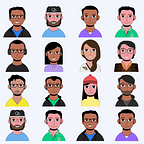AI in 2020 — A Review
How thousands of companies are using Artificial Intelligence — a 2020 rewind.
2020has been a hard year for a lot of us. However, there’s always a silver lining, and 2020 has been remarkable for the AI industry.
Without further ado, here are some of the top AI adoption trends that we’ve seen in 2020.
2020 has also been a huge year for the AI industry more broadly. See some of the top AI breakthroughs of the past year below.
1. OpenAI’s GPT-3
No list of AI breakthroughs is complete without mentioning GPT-3, though you’ve surely heard about it by now.
GPT-3 astonished millions of people by being able to generate realistic text, understand language, translate, summarize, and more, all on-the-fly and without additional training. It can even code in any programming language, since it learned from the entire Internet.
2. Neuralink Neural Decoding
In late August, Neuralink took the world by storm with a progress update featuring their ability to use a neural implant to read and decode data from pigs, which are very similar to humans.
Given a pig on a treadmill, they used neural data to accurately predict the positions of the pig’s joints. In other words, with a wireless neural implant, they could predict the position of all the pig’s limbs with very high accuracy, inspiring hope in millions of paraplegics around the world.
Neuralink uses AI to track channels with neural data and then find characteristic shapes. This can even by done at home with AutoML tools like Obviously.AI, but Neuralink’s real advantages lie in having over a thousand simultaneous read-write channels, analyzed in real-time after a non-invasive installation.
3. Tesla Full Self-Driving
In October, Tesla pushed its Full Self-Driving (FSD) update to beta customers, a decade ahead of what cynics projected.
Just 1 year ago, CNBC reported that so-called experts “predict it will be at least 12 years before fully autonomous vehicles are being sold to private buyers.” Tesla is 11 years ahead of schedule, making its FSD a serious breakthrough for AI.
4. Neural Voice Puppetry
Right at the start of 2020, a paper on “Neural Voice Puppetry:
Audio-driven Facial Reenactment” was released.
Audio-driven facial video synthesis can generate a realistic output video of a target person given only an audio sequence. While the concept isn’t new to 2020, it’s made incredible strides in accuracy.
5. Deepfake Detection
Deepfakes, or AI-faked videos of people saying input text, took the world by storm in 2017. Deepfakes have massive destructive potential. Imagine a staged video of a politician declaring war, or even simply a presidential candidate having a fake slip-up that costs her the election.
Deepfake detection can help put an end to this.
6. Turning 2D Photos into 3D
Using a depth estimation neural network, Facebook AI built a feature that turns to 2D photos into 3D via input from only a single camera.
3D photos have been around for a while, but have relied on high-tech dual-lens “portrait mode” capabilities. Now, AI can mimic that ability, essentially replacing advanced hardware components with a model.
7. Generating a dance from a song
Last year, MIT Tech Review wrote:
“Creative is, and will always be, a human endeavor.”
Others claimed that “creativity is humanity’s only advantage against AI.”
Today, AI can dance to music. Such a high expression of creativity is surely a breakthrough.
Conclusion
The AI industry marches on, undeterred by current events, bringing about a wide range of incredible breakthroughs this past year.
